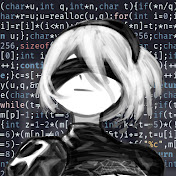When I saw Windows 11.
I’ve been dual booting Win10 and Linux, with Win10 as default because gaming.
Upgraded to Win11, that made me immediately switch the default boot to Linux, and repurpose D: as /mnt/data.
Haven’t booted into Windows since.
I do have Windows as a Docker image for using my printer, though.
Out of curiosity what printer do you have? I didn’t know there were compatibility issues with some printers
It’s a Canon PIXMA ts3350.
They have some script that should install drivers, but I never got it to actually find the printer.
Oh that’s so frustrating
There’s definitely compatibility issues with my printer… on Windows. I always have to send my documents to my linux laptop to print.
deleted by creator
Uni, around 2019! Had a professor on the web team who encouraged all students to do the entire uni education on Linux.
All tools and course material was tailored to work on Linux. Hand-ins, exams and anything related either functioned or had custom solutions built by the teachers, student and professors on the web programme.
Everything was open source and if we found any bugs we could just open issues on GitHub. Weekly hand-ins were done on the student server on your own instance of the web server.
In almost every aspect i think that programme was so well tailored for learning real web dev work.
When I got frustrated with Windows around 2019 and I had spare time I decided that enough is enough and spent a couple of days to take the time to learn Arch Linux and all of its quirks.
Around 2020 I started tinkering with NixOS as well which culminated as my NixOS configuration.
Although at this point I’m going back to Arch Linux as I actually know how to fix and make modifications faster and better than I could on NixOS.
I got my start with linux as a student looking to do astronomy. I didn’t have any issues with windows that got me to switch; just liked it more for its own sake. I think I went full nerd when I realized how to compile my own stuff and set environment variables. I also really liked having a package manager.
Every few years since the mid 2000s I’ve dual booted Linux (often Ubuntu) briefly before removing it again and just using windows and then I stopped for many years. I’ve gradually become less happy with windows, increasing ads and tracking but then the announcement of recall made it clear I had to switch. I was going to wait but then windows 24H2 update broke my Bluetooth audio so that was the last straw.
I installed endeavourOS on a separate drive and really liked it. GNOME at first. Then I installed nixOS and for me was almost perfect but I couldn’t get a few things to work like PIAs GUI app and doing some software development was more awkward than I liked.
Now I’m back on endeavourOS but with KDE plasma and it’s great.
I love endeavour os & KDE plasma.
It just works, haven’t had any issues
It’s 1995!
Now that I’m older stress weighs on my shoulders
Heavy as boulders but I told yaI originally used linux because I could only get my hands on ancient or broken tech.
Then I switched to Windows again because I was able to buy a modern laptop and started university which more or less required Microsoft services.
Two years ago I started using Linux on my dual booted machines more frequently. Last year I realized I mostly didn’t need Windows so I decided to find a daily driver distro.
I forgot how easy it is to get caught up in distro hopping lol. I started with Debian because I remembered apps with Linux support typically only provide .deb packages.
Then the new KDE came out and I couldn’t wait to use it so I moved to fedora. Then, in looking into visual aesthetics, I decided I wanted to give hyprland a try and honestly just try Arch and make everything my own.
That was a mistake. Too many options to the point I was only using my computer for messing with the visuals.
I moved to fedora because it would just work, used it for a semester, and then moved back to arch (w/ xfce) and have been using it ever since.
I’d say around the switch from Arch to Fedora was when I became a Linux nerd because I realized that there isn’t really a best distro for every circumstance. My nerdiness has reached enlightenment lol
I started using linux in 2011, but went full linux nerd in 2014/2015, while still in high school. Changed distros, changed OSs, changed everything, but full time it was linux all along, from ubuntu, to elementary os, to arch, to hackintosh, to solus, to endeavouros, to a lot of distros, but now i’m stable at cachyos (the optimized packages are amazing, ngl).
Love CachyOS. It works brilliantly on devices you wouldn’t think could handle it.
When I “solved” teering on nvidia by installing i3 and started using only terminal, because any gui program was still freezing.
offtop
By the way, (unofficial) manjaro i3/sway were really good, inspite of populistic opinion about manjaro, especially in comparison with fedora i3 or endeavouros i3 (but still just arch/void is better, when you get used to terminal, than arch-based distros).

I think I was still occasionally using Mac OS in early 1999, but I made the leap sometime that year.
Summer of 2020. Lockdown was in full effect and I was working from home. I wouldn’t say I had a lot of extra free time (my kid was 1 year old at the time, lol), but I spent many hours that Summer tinkering with various projects, and that led me to eventually adopt Linux as my daily driver on all my machines.
I’ve dabbled with Linux since 2005, but was never savvy enough to completely ditch Windows until 2020.
Uh, just yesterday. Installed NixOS (with KDE) because I learned Debian at work, but am really missing the ability to track what I’ve installed via configuration. I like the idea of dotfiles in a repo, but want a bit more control like that for my OS.
Context: I’m a data engineer that writes Python. Python has
pyproject.tomlfiles (toml ~= ini files) where you can specify which libraries you want to use, defining which version you minimally, maximally, or just specifically want. And I wished that setup existed for Debian as well, but it doesn’t. So after searching I found that NixOS is pretty much the closest thing. Windows 10 is EOL soon enough, so might as well switch beforehand and not wait until the last second.After I switched to Linux Mint because Windows 7 got EOL a friend showed me Manjaro. I used it for a while and it was a pain in the ass. This was the moment I took a look at Arch Linux and after my first successful install I went full Linux nerd. This is roughly 5 years ago and now I even work in IT despite having studied social science.
Last year sometime. Frustrated by Microsoft’s latest tomfoolery, I decided, “eh, might as well give Linux another shot, it’s been a decade or so since the last time.”
So I booted up my fifteen-year-old desktop computer as a testbed before I put it on my daily driver laptop. First I booted it into Windows (7, because that’s how old it is and it couldn’t hack Windows 10) to see if there was any data I needed to pull off of it, and predictably it was an awful experience. Slow? Try glacial. Constantly paging out of memory. I had to put it in safe mode without networking just to get it to boot all the way up. I grabbed everything I thought I needed and breathed a sigh of relief that I was done with that.
Then I put Linux Mint on it. And…wow.
Like, I knew Linux did a good job on older systems, but this was unbelievable to me. It was snappy and responsive in a way that it has literally never been. The thing ran like butter. I was flying around that OS, installing games, setting up backups, even trying my hand at a bit of light self-hosting.
But the real kicker came when I installed VirtualBox. See, I have one program that I still need Windows for; an Adobe program that some people I work with still use. So I installed VirtualBox and put Windows 10 on there, fully expecting to clown on Windows for a few minutes but just hoping I’d see enough to know whether it would be usable on my laptop.
But no. Windows 10—which, when I tried a decade ago, couldn’t run on that machine at all—ran almost flawlessly in VirtualBox on Linux. I mean, it wasn’t the quickest thing ever, but for a modern build of a more-or-less modern OS on a computer older than my marriage, it was honestly amazing.
So, when did I go full Linux nerd? When I discovered that it can run Windows better than Windows can.
There are a few other things, too. The software manager, the customizability, the lack of ads, the unobtrusive updates… And at some point along the way, I realized that it actually felt like my computer, which is a feeling I haven’t felt in ages.
It’s a great feeling.











